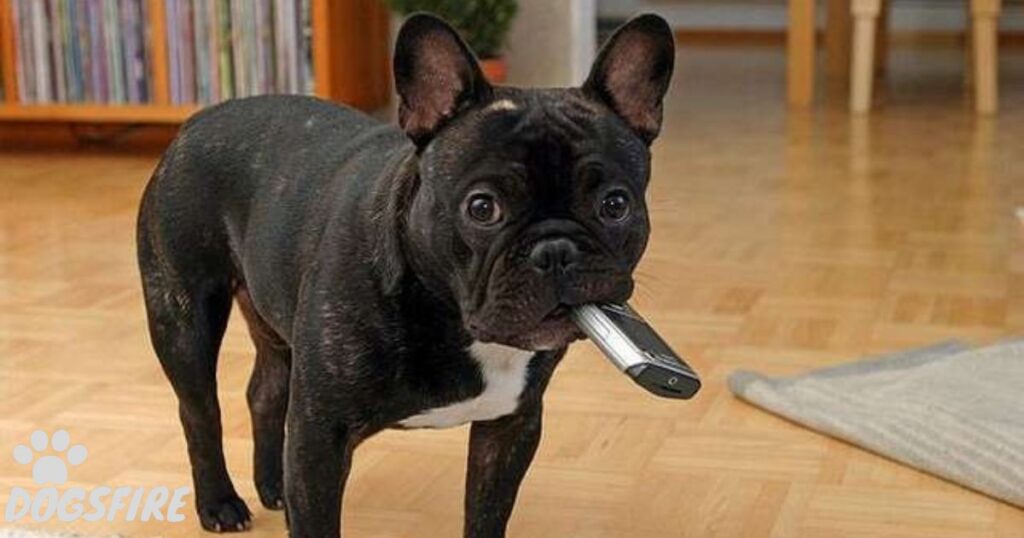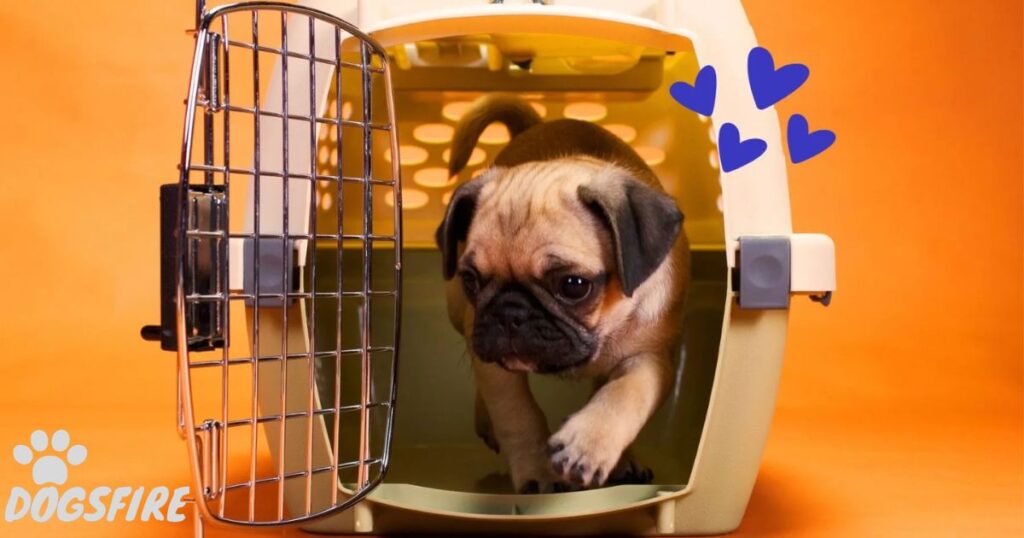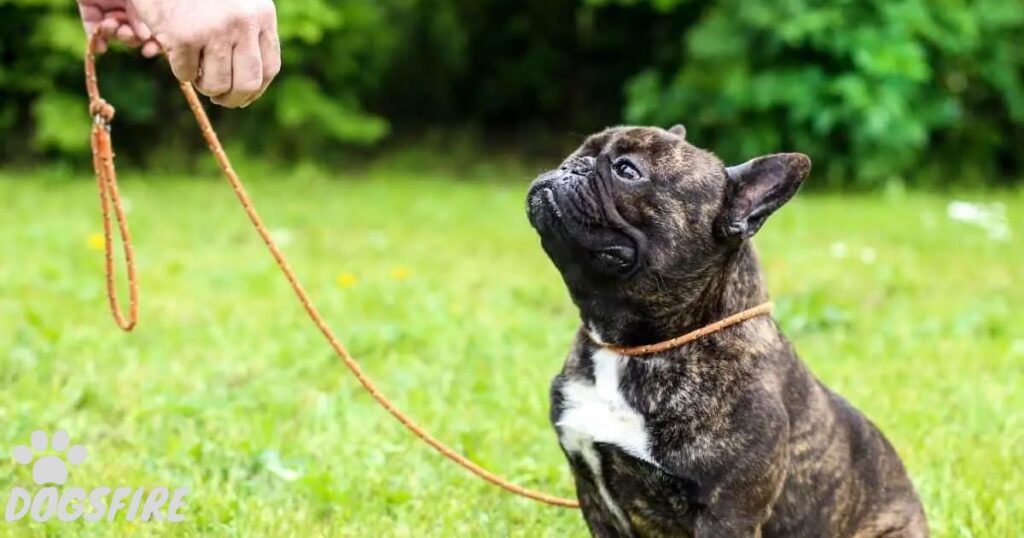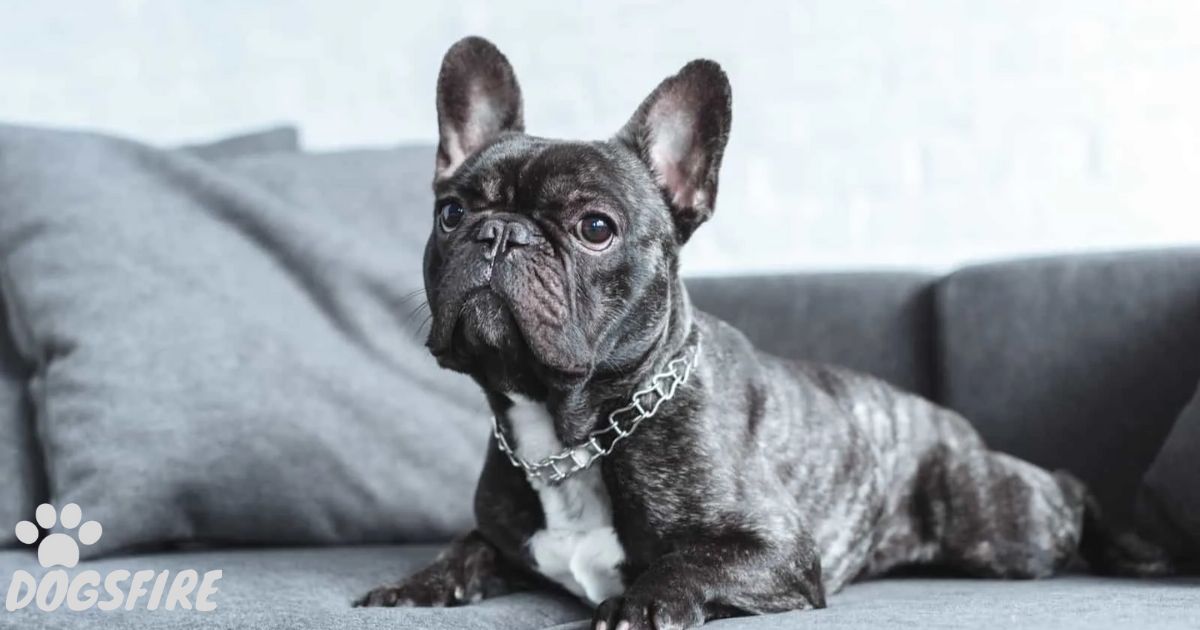Training a French Bulldog involves teaching commands and behaviors to enhance obedience and communication. Consistent positive reinforcement, such as treats and praise, is effective in shaping their behavior. Patience and short training sessions are key to successfully train a French Bulldog.
Curious about the best way “How to Train a French Bulldog”? Learn the essentials of positive reinforcement and patience to master commands like sit, stay, and fetch. Elevate your bond with your furry friend through consistent training and affectionate guidance.
To train a French Bulldog, start with basic commands like sit and stay. Use positive reinforcement, such as treats and praise, to reward good behavior. Consistency and patience are key to building a strong bond and teaching your French Bulldog new tricks.
When to Start Training Your French Bulldog?

Training a French Bulldog can be a fun and rewarding experience. Start with basic commands like “sit” and “stay.” Use positive reinforcement, like treats and praise, to encourage good behavior.
Consistency is key. Repeat commands and rewards consistently so your French Bulldog understands what you want. Also, socialize your Frenchie from an early age. Introduce them to various people, places, and other pets to help them become well-rounded and friendly. Remember, patience and positive reinforcement go a long way in creating a well-behaved and happy French Bulldog.
How Easy Is It to Train a Frenchie?
Training a French Bulldog, or Frenchie, can be surprisingly easy due to their intelligent and adaptable nature. These small and affectionate dogs are quick learners, making basic commands like sit, stay, and come relatively straightforward to teach. Their love for human interaction and positive reinforcement, such as treats and praise, further enhances the training experience. However, it’s crucial to start early, as consistent training from a young age helps establish good behavior habits.
While Frenchies are generally easy to train, it’s important to note that they can be a bit stubborn at times. Patience and consistency are key factors in successfully training a Frenchie. Additionally, focusing on positive reinforcement and keeping training sessions short and engaging can contribute to a well-behaved and happy French Bulldog. With the right approach, training a Frenchie can be a rewarding experience for both the owner and the dog.
Is A French Bull Dog The Right Dog Breed For You?

A French Bulldog might be the right breed for you if you’re seeking a small, affectionate companion with a calm demeanor. Their adaptability to apartment living and minimal exercise needs make them suitable for various lifestyles. However, potential owners should consider their grooming requirements, potential health issues, and the need for consistent training and socialization to ensure a happy and well-adjusted Frenchie.
The first days with your Frenchie are filled with joy as you bond with your new, lovable companion. Be patient and gentle, allowing time for your French Bulldog to adjust to their new home. Create a cozy space, provide familiar toys, and enjoy the delightful moments as you and your Frenchie start building a lasting friendship.
Patience is Key
In any endeavor, patience is key to achieving success. It allows for gradual progress, learning from mistakes, and maintaining a positive mindset. Whether learning a new skill, training a pet, or facing challenges, exercising patience paves the way for lasting achievements.
Training Begins from Day One
Start training your new furry friend from day one to build a strong bond and instill good habits. Simple commands like sit and stay, along with positive reinforcement, help create a well-behaved and happy pet. Consistency in training from the beginning sets the foundation for a lifelong positive relationship with your dog.
The 5 Basic Rules When Training your Frenchies
Training your Frenchies is easy with these basic rules
· Begin Training Early
- Start training your dog early for better results and behavior. Early training helps establish good habits and strengthens the bond between you and your furry friend. Teaching basic commands and socialization from the beginning sets the foundation for a well-behaved and happy companion.
· Maintain a Consistent Training Schedule
- Consistency is key in training – maintain a regular schedule for effective results. Establishing a routine helps your dog understand expectations and reinforces learning. Stick to a consistent training schedule to build a strong foundation and foster positive behavior in your furry friend.
· Practice Patience
- When training your dog, practice patience by allowing time for learning and understanding. Dogs, like people, may need repetition to grasp commands, so stay calm and consistent. Patience fosters a positive training environment and strengthens the bond between you and your furry friend.
· Reward and Recognize Progress
- Encourage your pet’s learning with positive reinforcement by rewarding and recognizing progress. Offer treats, praise, or affection when they successfully follow commands or exhibit good behavior. This approach builds a strong bond and motivates your pet to continue learning and behaving well.
· Never Use Punishment
- Avoid using punishment when training your dog; instead, focus on positive reinforcement. French Bulldogs respond better to encouragement and rewards for good behavior. Creating a positive training environment builds trust and strengthens the bond between you and your furry companion.
Basic Commands that your Frenchie Needs to Know

Come!– Coming to You When Called
Training your dog to come to you when called is a crucial skill for a happy and safe relationship. Start by using a cheerful tone and offering enticing rewards like treats or praise when your dog responds to their name. Keep training sessions short, positive, and gradually increase distractions to reinforce a reliable recall, ensuring that your dog willingly comes back to you in various situations.
Consistency is key; reinforce the behavior consistently, and avoid using their name for anything negative. Practice the recall command in different environments, gradually progressing from quiet settings to busier areas. With patience and positive reinforcement, you can build a strong recall response, allowing your dog to enjoy more freedom while ensuring their safety and your peace of mind.
Stop! – When Walking the Dog
When walking the dog, ensure you use a comfortable leash and collar to keep your furry friend secure. Start with short walks and gradually increase the duration to match your dog’s energy level. Allow them to explore their surroundings, but maintain control by teaching basic commands like “heel” to ensure a pleasant and safe walking experience.
Remember to bring essentials like water, especially on warmer days, to keep your dog hydrated during the walk. Pay attention to their body language and adjust the pace accordingly. Regular walks not only provide exercise but also strengthen the bond between you and your canine companion, contributing to a happy and healthy relationship.
Sit! Lie! – Sitting And Lying
Teaching your dog to sit and lie down are fundamental commands that enhance obedience and create a well-behaved pet. To start, use treats and a calm voice to encourage your dog to sit; gently press their back end down if needed. Once they’ve mastered sitting, progress to the “lie down” command, rewarding them for following the cue to lie on the ground.
Consistency and positive reinforcement are key, making these commands helpful in various situations, from everyday routines to maintaining control in public spaces.Sitting and lying down on command not only showcase your dog’s good behavior but also establish a foundation for more advanced training. These basic commands are building blocks that contribute to a positive and cooperative relationship between you and your furry friend.
Down! – Don’t Let Them Jump Up
Don’t Let Them Jump Up” is a simple and important reminder for pet owners. When your furry friend gets excited or sees you, they might be tempted to jump up. This behavior, while often well-intentioned, can be problematic. To address this, it’s crucial to establish clear boundaries and train your pet to greet you and others without jumping up. Consistent reinforcement of alternative behaviors, like sitting or staying, helps create a positive and controlled environment.
Training your pet not to jump up is not just about preventing inconvenience; it’s also about ensuring their safety and the comfort of those around them. A well-behaved pet is a joy to be around, and teaching them proper manners is an essential part of responsible pet ownership. So, take the time to guide your furry friend and enjoy a more harmonious relationship with them and others in your community.
Quiet! – Stop Barking
If your dog barks excessively, it’s important to address the behavior. Start by understanding the reason behind the barking. Is it due to boredom, fear, or excitement? Once you identify the cause, use positive reinforcement to train your dog. Reward them when they remain calm and quiet.
Consistency is key, so be patient and persistent in reinforcing good behavior. Avoid yelling or punishing, as it may increase anxiety. Provide toys and engage in activities to keep your dog mentally stimulated. Seek professional help if needed. Remember, a calm and well-behaved dog enhances the bond between you and your furry friend.
Ultimate Guide to Raising a Frenchie
The “Ultimate Guide to Raising a Frenchie” is a helpful resource for French Bulldog owners. It covers everything from puppy care to training tips, making it easy for new and experienced pet parents to provide the best for their Frenchie companions. With insights on nutrition, health, and behavior, this guide ensures a happy and thriving life for your lovable French Bulldog.
Steps of a Successful Potty Training

Potty training is teaching pets or toddlers to use a designated area for bathroom needs. It involves consistent guidance to help them understand where and when to go. Successful potty training leads to cleaner living spaces and a more convenient daily routine. Follow these steps of a Successful Potty Training.
Step One: Remove Carpets
Removing carpets can be a practical choice for various reasons. Carpets can trap allergens, making it challenging to maintain a clean and healthy environment. Hard flooring, like wood or tiles, is often easier to clean and can reduce allergy-related issues. Additionally, removing carpets can be a good idea for households with pets, as it minimizes the chances of stubborn odors and makes cleaning up accidents simpler.
Step Two: Take Your Frenchie out Frequently
Taking your Frenchie out frequently is essential for their well-being. French Bulldogs, like many dogs, need regular bathroom breaks. By going out often, you help them stay comfortable and avoid accidents indoors. It’s a simple way to maintain a happy and healthy environment for both you and your furry friend.
Step Three: Reward your Frenchie
Rewarding your French Bulldog is a key part of positive reinforcement training. When your Frenchie behaves well or learns a new command, give them treats, praise, or affection. This encourages good behavior and strengthens the bond between you and your furry friend. Remember, a happy and rewarded Frenchie is more likely to repeat the desired actions, making training a positive and enjoyable experience for both of you.
Step Four: It Gets Automatic
It Gets Automatic” refers to the process of turning a task into a habitual, almost effortless activity. When we consistently practice or perform a task, it becomes automatic over time. Initially, it might require focus and effort, but with repetition, our brains adapt, making the task smoother and more natural. Whether it’s learning a new skill, forming habits, or mastering routine activities, the phrase encourages perseverance, highlighting the eventual ease that comes with consistent practice and familiarity.
Tip: No Nose-Pushing
Means not using your nose to force or intrude on others. It encourages respectful and considerate behavior. Instead, communicate openly and kindly to maintain positive interactions.
How to Crate Train Your Frenchie?

Crate training for your cherished French Bulldog involves establishing a secure retreat for your furry friend. Let’s delve into the steps required to achieve effective crate training.
Step 1: Perfect Placement of the Crate
Choosing the perfect placement for your pet’s crate is essential for successful crate training. Find a quiet and comfortable spot in your home where your furry friend can feel secure. Avoid placing the crate in busy areas with high foot traffic, as this can cause stress for your pet.
Additionally, make sure the crate is in a room where your family spends time, so your pet doesn’t feel isolated. Gradually introduce your pet to the crate in its chosen location, offering positive reinforcement and treats. Creating a positive association with the crate and its placement helps your pet view it as a cozy and safe retreat.
Step 2: Playtime by the Crate
This is a delightful way to engage with your pet. Set up their crate in a spacious and inviting area, and incorporate toys to make it an enjoyable environment. Encourage your furry friend to explore, play, and feel comfortable in and around their crate, turning it into a positive space for both rest and play.
This practice not only fosters a positive association with the crate but also provides a designated space for your pet to unwind. Through playful interactions by the crate, you strengthen the bond with your pet and create a joyful atmosphere, making the crate a welcoming retreat for them.
Step 3: Feeding Near the Crate
Feeding near the crate is a helpful strategy to build positive associations with the crate for your pet. Start by placing your pet’s food bowl close to the crate during mealtime. This allows them to associate the crate with a positive and rewarding experience, making it a more inviting space.
Over time, as your pet becomes comfortable eating near the crate, you can gradually move the bowl inside. This step-by-step approach helps your furry friend associate the crate with a pleasant routine, making the crate a welcoming and secure space for them.
Step 4: Locking the Crate
Locking the crate is an essential step in crate training your pet. Once your furry friend is comfortable being in the crate, you can start securing the door.
This ensures a safe and enclosed environment, preventing your pet from accidentally getting out and reinforcing the idea that the crate is their designated space. Gradually increasing the duration of crate time while locked helps your pet adapt and feel secure in their crate, making it a positive and comforting space for them.
Step 5: Road Trips
Road trips are exciting adventures where you travel by car to different places. You pack your essentials, hop in the car, and hit the open road. Along the way, you can explore new sights, enjoy scenic views, and create lasting memories with friends or family. Road trips offer a blend of freedom, spontaneity, and the thrill of discovering new destinations, making them a favorite way to experience the joy of travel.

Teaching your French Bulldog to walk on a leash is crucial for their safety. Use these helpful tips to make your walks enjoyable and secure for both you and your furry friend.
Step 1: Collar Introduction
Introducing a collar to your pet is a gradual process that helps them get comfortable with wearing it. Begin by showing them the collar and letting them sniff and investigate it. Then, gently place the collar around their neck for short periods, offering treats and praise. This positive reinforcement helps create a positive association, making the collar a familiar and accepted accessory for your furry companion.
Step 2: Leash Introduction
Introducing your pet to a leash is a gradual process to ensure they feel comfortable and secure. Begin by letting them explore the leash without attaching it, allowing them to get used to its presence. Once they’re at ease, attach the leash for short periods indoors, rewarding them for positive behavior. This gradual approach helps your pet associate the leash with positive experiences, making future outdoor walks a pleasant and enjoyable activity.
Step 3: Baby Steps
Taking baby steps means progressing slowly and steadily toward a goal. It’s a gentle approach that allows for learning and adapting at a comfortable pace. Whether in learning a new skill or overcoming challenges, embracing baby steps ensures a smoother journey and increased chances of success.
Step 4: Transition to the Outdoors
Transitioning to the outdoors is an exciting step for pets and toddlers alike. It involves introducing them to the wonders of the outside world, gradually letting them explore new scents, sights, and experiences. This process requires patience and supervision to ensure a smooth and enjoyable transition into the great outdoors.
Consider Professional Training for Your French Bulldog
Considering professional training for your French Bulldog can be a wise decision. Trained experts can provide valuable guidance to ensure your furry companion learns essential skills, making your relationship stronger. Professional training enhances behavior, socialization, and overall obedience, contributing to a happy and harmonious life with your beloved French Bulldog.
FAQ ,s
How to train a French Bulldog to pee on pad
To train a French Bulldog to pee on a pad, place the pad in a designated area. Consistently bring your Frenchie to the pad after meals and naps, rewarding successful use with praise and treats.
How to train a French Bulldog not to bite
To stop a French Bulldog from biting, use a firm “no” and withdraw attention when they bite. Reward gentle behavior with praise and treats, reinforcing positive habits and discouraging biting.
French bulldog puppy training schedule
Establish a French Bulldog puppy training schedule with short, frequent sessions to keep their attention. Focus on basic commands, socialization, and positive reinforcement for a well-rounded and happy furry friend.
Conclusion
Training a French Bulldog requires patience, consistency, and positive reinforcement. Start with basic commands like sit, stay, and come, using treats and praise to reward good behavior. Consistent daily practice and short training sessions will help your French Bulldog learn and retain commands more effectively.
Additionally, building a strong bond through play and affectionate interactions creates a positive training environment. Remember that each dog is unique, so tailor your training approach to your French Bulldog’s personality. With time, dedication, and a loving approach, you can successfully train your French Bulldog and enjoy a well-behaved and happy companion.












